Deadliest Places on Earth
Research indicates that many of the deadliest places on Earth are man made.
Earth is a beautiful place. Rolling dirt-tracks through forests fill us with wonder; a fresh fall of snow brings out the pearly whites of our smiles and anyone who has ever climbed a mountain to gaze upon the sprawling, living lands below knows the uplifting gratification of that sight. Earth is also more deadly than we can fathom: natural disasters like tsunamis and earthquakes are unavoidable, unforgivable, and will always decimate populations without care or notice, but many troubles we cause for ourselves. We’ve created ghost-towns, cost the lives of millions, and been ravaged by the tumultuous venom of Mother Nature. The hubris of war has rendered many places on Earth unfit for humans, from Bikini Atoll destroyed by nuclear testing, to the Anthrax-riddled Soviet island of Vozrozhdeniya. But it doesn't take Cold War weapons research to render a place completely barren. Sometimes industries can wreak havoc just as permanent as war.
Lake Nyos
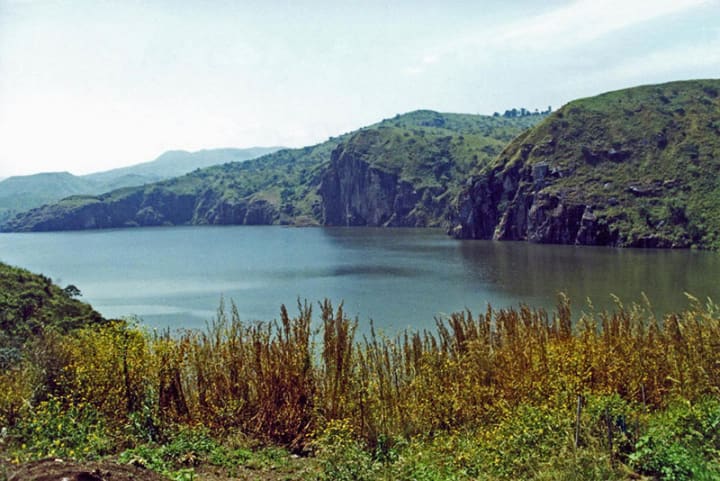
Lake Nyos is a deep, wide and fatally toxic expanse of water in western Cameroon. Formed in the wake of a violent crater eruption five centuries ago, a sort-of volcanic dam has formed, hemming in the water atop a bed of magma. This magmatic floor bleeds carbon dioxide which filters up through the water and seeps into the surrounding air; usually in small quantities, the CO2 will slowly dissipate, harmless.
A few decades ago Lake Nyos suffered a natural disaster called a limnic eruption: a massive flood of CO2 ruptured from the bed of magmatic rock and swept across the nearby countryside in a silent, deadly cloud. The dense CO2 gas displaced the oxygen upwards; starving every living creature of air and suffocating over 1,700 people and double that in livestock. Such a disaster could happen again today, without warning; “exploding lakes” can be truly perilous.
Matanza-Riachuelo River Basin, Argentina
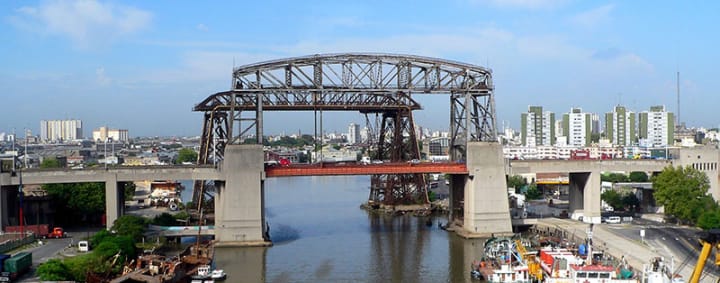
Literally translated as “Slaughter River,” the Matanza basin is a 40-mile stretch of effective landfill carrying disease and toxic water south of the Argentinian capital. Some 20,000 people are forced to live on its grimy banks; shared with thousands of industrial sites which infect the basin with dangerous contaminants – like heavy metals and literally tonnes of oil and petrochemicals – until very few areas contain anything even resembling safe drinking water.
The local children are known for the extraordinarily high levels of lead and chrome in their blood, inducing a long list of malignant health issues. Nearly two-thirds of those living by the Matanza banks are in a squalor deemed “unsuitable for human habitation.”
Hazaribagh, Bangladesh
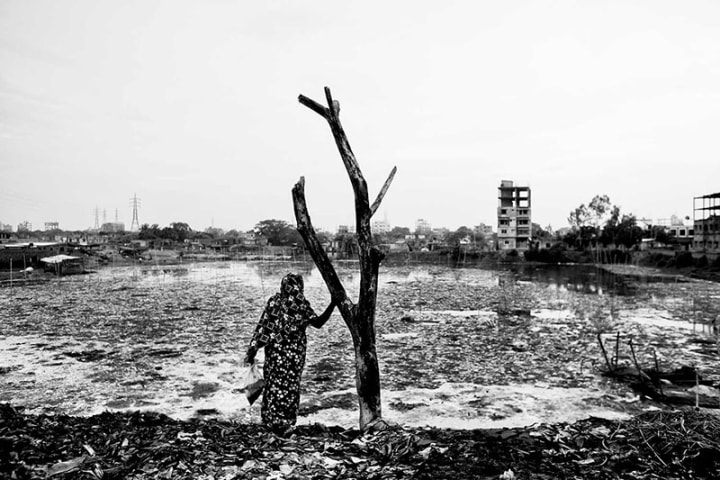
Renowned for its health resort, Hazaribagh is also notorious as a colossal pollutant of the Buriganga River, into which its 270 tanneries unceremoniously dump thousands of tons of horrifically toxic waste every single day. Most workers in these outdated, crude factories have their homes constructed close to water sources (streams, canals, etc.) which are now immutably infested with hexavalent chromium, a powerful carcinogenic: an agent directly involved with causing cancer.
The extreme disregard for safe waste-disposal/working practice – like leather recyclers who simply burn leather scraps and release the toxic fumes into the atmosphere – are contaminating the air and water of Hazaribagh and risking the livelihood of every single person who calls that wasteland home.
Kalimantan, Indonesia
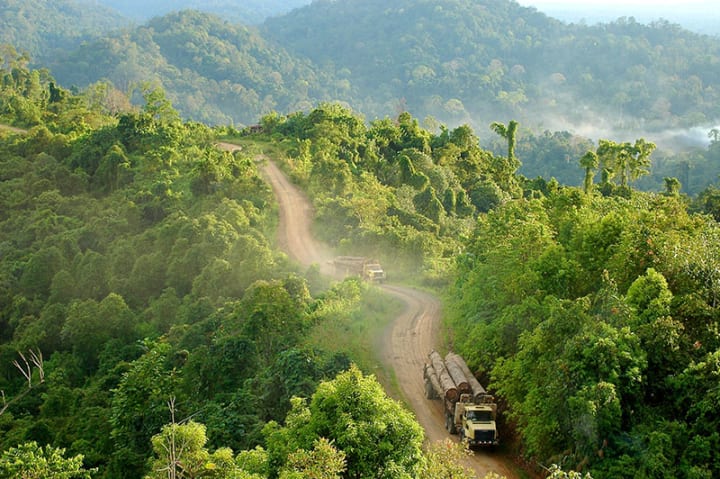
Mercury poisoning is barbaric; it can cause formication, tachycardia, and even have your skin shred itself from your body. In can cause sensory impairment and the effects on younger children are even more varied. Kalimantan is a gold-mining hotspot on Borneo where most of the ore is mixed with mercury. Local smelters buy the newly-mined gold and burn off the mercury to leave the pure gold behind. However, by doing this in their own homes, therefore trapping the extremely poisonous gas inside, they invariably cause serious damage their own health.
The gold mining industry here provides a livelihood for thousands of people on the island but decades of persistent mining and interaction with mercury has poisoned a great number of the population. Such a dense concentration of mercury will cause irreparable damage to the health of any who live in that area; making it a terribly hazardous environment.
Dzerzhinsk, Russia
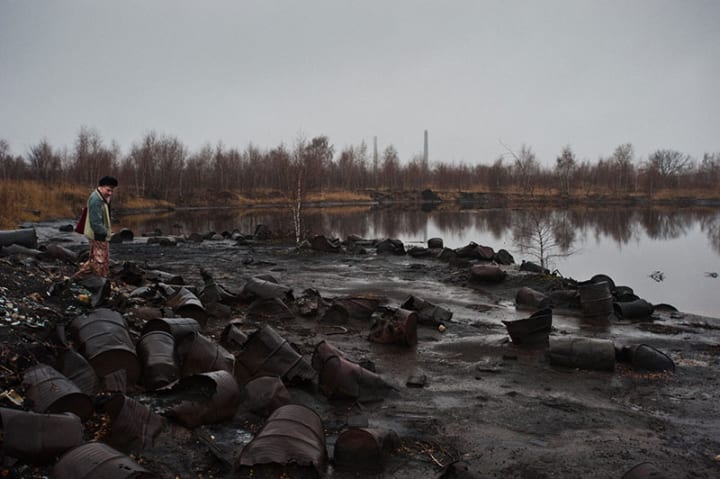
With an average life expectancy of just over 40 years old, Dzerzhinsk has gained a despicable renown as one of the most heavily polluted cities in the entire world. For over 70 years, this near cesspit was subject to the dumping of 300,000 tons of chemical waste, including some of the most dangerous neurotoxins in existence. Dioxin is effectively a highly toxic organic pollutant which, in 2007, infected some drinking water in Dzerzhinsk to such a degree that levels were found to be 17 million times above the safe limit.
With landfills leaking toxic waste into nearby water supplies and a birth rate less than half the death rate in 2003, Dzerzhinsk is an abominable wasteland where, simply put, you don’t go.
Centralia, Pennsylvania
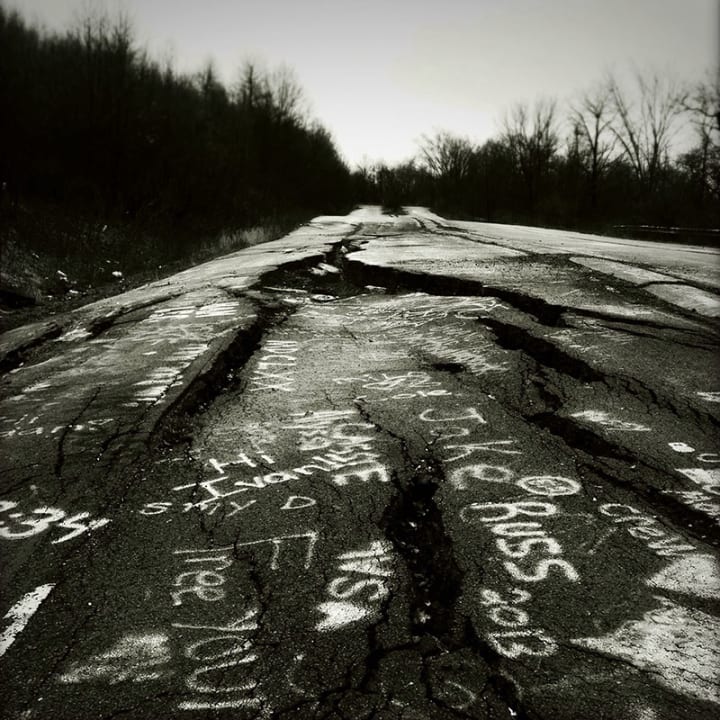
We love apocalypse stories: ghost towns, barren streets, and that air of absolute mystery makes us feel giddy and excited. Centralia is a real-world ghost town and it’s about as close to a literal hell on Earth as you’re likely to find. A coal-mining powerhouse in its heyday, a ferocious fire tore the town apart and started a chain-reaction underground which has burned ever since. Poisonous smoke filters up through the ground to this day but has long since killed of any sign of plant life on the surface.
The toxic carbon monoxide that flooded the town started an evacuation of the entire population and has left nothing but a barren wasteland in its wake. Home now only to graffiti and occasional daredevil sightseers, Centralia is one of the most deadly places on earth. To this day the ground is still warm to the touch, even in the depths of winter…
Barring Chernobyl, Centralia is probably the most famous of these "waste lands," and proves just as interesting. Centralia was a mining town where locals labored tirelessly in anthracite coal mines. Unfortunately, the network of coal mines that brought wealth to the region also became the towns demise. A fire started in the mine directly beneath the town, forcing the inhabitants to find new communities. The fire has been burning beneath the pavement of Centralia since 1962 and shows no sign of slowing down. It will likely burn for generations to come.
It’s not known for sure what started the fire that eventually drove a city of more than 1,000 residents down to just a handful. The best theory is that it was started at a nearby landfill. In 1962, the city hired a volunteer fire crew to clean out the town landfill in a local strip mine—an endeavor which involved burning trash. After the crew extinguished the intentional fire they realized that a vein of coal had ignited. The ensuing blaze engulfed the extensive coal mines but residents were unaware of the dangers posed by the fire until the late seventies.
Locals grew concerned in 1979 when a gas station owner noticed that the gas he was pumping was hotter than normal and when he lowered a thermometer it came back reading 172 degrees Fahrenheit. It took years of complaints about headaches and dizziness before it finally came to light why the residents were so sick, the subterranean fire was pumping carbon monoxide into the air. In 1981, a 12-year-old boy almost fell to his death down a sinkhole that opened in his backyard. National media attention motivated Congress to allocate funds for a relocation effort. The majority of residents accepted offers to move to neighboring communities.
Humans are remarkably resistant to being pushed out of their homes, and a handful of dedicated residents have remained in Centralia in the decades since that first spark. Most famous are the Lokitis, profiled in the 2007 documentary The Town That Was they are joined by approximately ten additional residents who have refused to leave their family homes.
The funny thing is Centralia isn't the blasted hellhole that you might imagine. It’s not a town shrouded in Silent Hill-esque smoke, killing and choking all who enter. By all accounts there are cracks in the surface of the ground and smoke does billow forth but it’s hardly all-encompassing. All it takes to get to Centralia is to drive up Highway 61 from nearby Ashland, and while the road is technically closed it’s open enough for Google Street View cars to pass through. On a nice day, you may even run into a handful of tourists.
With the obvious visual signs of the disaster being comparatively tame you can see why some hard-core residents think the disaster has been exaggerated. For years the remaining locals have been fighting the eminent domain seizure, citing evidence that the fire is receding or almost out. Some residents even assert that the whole push to evict Centralia is actually part of a conspiracy to gain access to the rich anthracite coal mines beneath the town.
As the inferno is pegged to rage on for at least two centuries the cost of defeating it continues to mount. We can only imagine the cost of extinguishing the Centralia fire now—in 1981 it was pegged at $660 million—it’s costly enough that the state of Pennsylvania would rather oust the town’s residents than fight it. Only a few buildings are left in the ghost town, among invisible carbon monoxide fumes and cemeteries which receive far fewer visitors. Centralia may be lost to the flames but it will continue to stand as one of the deadliest towns in the United States.
Norilsk, Russia
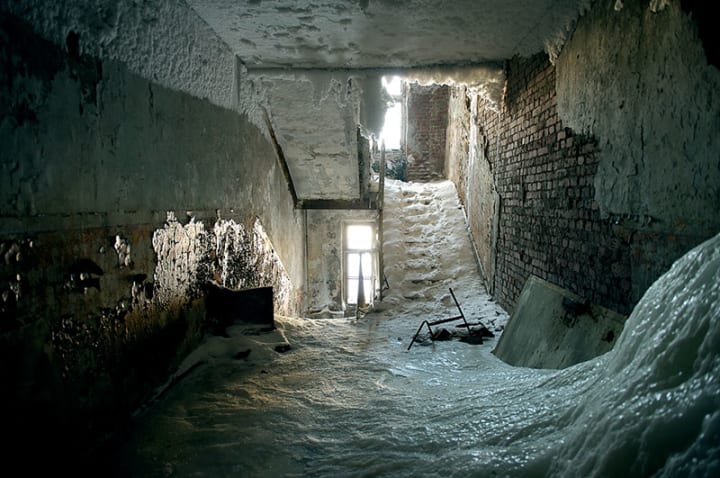
Want a description of what absolute pollution looks like? In Norilsk, the snowfall is literally black. As the largest heavy metal smelting city in the world, it emits almost unfathomable amounts of copper and nickel oxide as well as sulphur dioxide. What that boils down to is an inhospitable zone where the air tastes like sulphur, chronic respiratory and pulmonary diseases abound and the average life expectancy is a decade short of the national average.
While death rates are reputedly on the decline, Norilsk is still a veritable death-trap; somewhat fitting for a place which originally served as a Siberian slave labour camp. Isolated and hidden north of the Arctic Circle, there isn’t a living tree within 30 miles of this Russian city.
Wittenoom, Australia
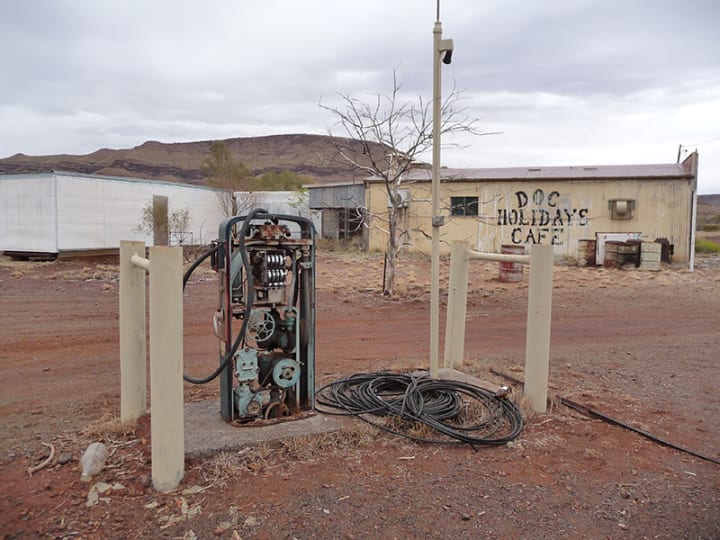
Asbestos used to be valuable commodity but, as we know, it also brings with it a host of dangerous illnesses. Wittenoom was once home to the only blue asbestos mines in Australia and they shipped over 150,000 tons of the toxic material across the world when productive. Eventually the health hazards became a priority and the town was abandoned; I mean properly abandoned. With six confirmed inhabitants today, even those now decades removed from the small settlement are being attacked by fatal illnesses such as mesothelioma, a brutal cancer which affects the lining of the lungs and chest wall.
Asbestos was used in gardens, school and just about anywhere they could find a use for it. The end result is that everyone living there was invariably exposed to its brutal toxicity and it’s estimated that 25% of people living there will eventually die because of it sooner or later.
Much like the Pennsylvania ghost town, Wittenoom was once a mining town and has been all but completely abandoned. Unlike Centralia, there was no accident or disaster that triggered the downfall of this town because the dangers were inherent in its product. Wittenoom was Australia’s only blue asbestos mine.
It’s arguable that during the early days of the Wittenoom mine, in the 30s and 40s, the mining companies weren’t aware of the mineral’s toxicity. However, by the time the mine shut down in 1966 the company which owned the mine, CSR Limited, not only knew the rock was poisonous but deliberately ignored repeated advice from medical and governmental authorities to shut down the mine.
The mine was a living hell. Miners descended claustrophobic paths through the rock to mine out thin veins of blue asbestos. In the process of grinding down the rock to extract its fiber the asbestos essentially became aerosol and entered the lungs of the miners as they worked. Blue asbestos is considered the deadliest form of asbestos; in Wittenoom it filled the air.
Attempts were made to regulate the mine in the early 1960s, but the company threatened to shut down the operation if additional restrictions were imposed. No changes were made. Reports documenting the miners working conditions is the stuff of nightmares. A publication from the Asbestos Disease Society of Australia describes it:
Working conditions inside the mine were appalling. The miners had to crawl around in the hot dark stopes on their knees, bent almost double, working in dreadful conditions gouging out the blue asbestos which was in very thin bands in the hard rock...working conditions in the mill were even more appalling than the mine. Milling was a dry process where the ore was ground down and the fibre then extracted. Conditions were so bad that the men needed flood lights to see through the dust at midday. The men worked in these clouds of asbestos dust for hours on end, when only one minute at such concentrations to blue asbestos fibers would have been enough to cause lung cancer or mesothelioma.
Part of what makes the lung cancer and mesothelioma caused by asbestos so nefarious is that it can take decades to surface, which makes it hard to pin blame on any one event or entity. Even so there were attempts to force the company to reduce dust levels at the mine as early as 1944. In 1948, government workers tried to convince the health department of the danger the miners and town residents were facing. After all, even so much as visiting Wittenoom would be enough to induce lethal dose of asbestos—but miners were working in clouds of asbestos dust for months.
What was once a bustling mining town of 20,000 workers, tourists, and government officials is now reduced to eight people. Wittenoom is located deep in the middle of nowhere, in the barrens of Western Australia, where dust is a constant problem. Combined with the lingering presence of deadly asbestos the environment is impossible to bear.
The Australian government didn't have the ability to force the closure of the mine but in 1978 the State Government began to kill off the city. The State encouraged citizens to leave by buying their property gradually eliminating public services, like airports and police stations, over the course of a few decades. In 1993, after fifteen years of clearing people and attempting to detox the city, contamination in Wittenoom was still so extensive that it was deemed not worth the effort of fixing. The town’s status was revoked in 2006 and in 2007 the name of Wittenoom was stripped from all maps and painted over on signposts.
As in Centralia, Wittenoom is afflicted by a deadly environment. The carbon monoxide in Centralia is invisible and odorless; the asbestos dust in Wittenoom could take decades to makes its effects felt. Even so, the Australian government is unequivocal in its approach to quarantining the town. The Australian government plastered warning signs on all routes, and printing out brochures to warn people of the dangers of the blue asbestos riddled town.
It’s hard to put an exact figure on the death toll from the Wittenoom mine, but some sources estimate that as many as a third of those who passed through town, when the mine was operational, have some form of cancer. Wittenoom has been compared to massive disasters like the gas leak at Bhopal. Wittenoom was a terrifying confluence of company negligence, medical ignorance, and a dry and dusty climate. All of which led to the horrifying reality of a city blanketed in carcinogenic dust.
The Nevada National Security Site
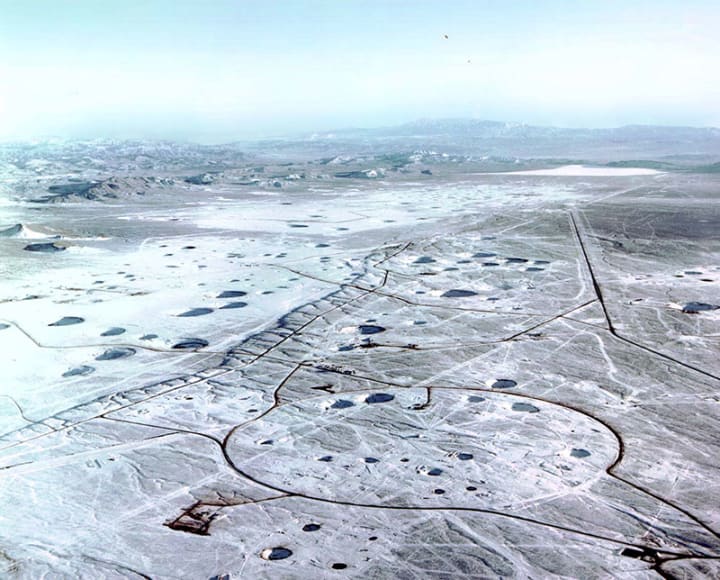
Think negligent pollution and masking the CO2 emissions of your factory are bad? This desert land in Nevada has endured more than 900 nuclear detonations at the hands of the US government. The testing ground – from which the iconic “mushroom cloud” gained prominence – was always a pretty barren wasteland; now it’s a barren wasteland with extremely high levels of radiation (above and below ground) which are carried on the wind to southern Utah.
It is a point of controversy as to whether or not the testing is actually having a significant effect on the health of those in nearby areas; however it’s beyond doubt that the plains of Nevada themselves have been blasted, burned, scorched and razed beyond any hope of life.
The Nevada National Security Site (NNSS) is located among 1,300 square miles of desert in the American Southwest. The NNSS is the location of decades of nuclear testing including the Yucca Flats, dubbed “the most bombed place on Earth.” Unsurprisingly, given this concentration of explosive tinkering, the NNSS has now turned its attention to storing radioactive waste, allowing it to decay over tens of thousands of years where it poses no harm to people. To this aim they created the Yucca Mountain nuclear waste depository and the Waste Isolation Pilot Plant.
In 1981, the US Government brought together a group of linguists, scientists, science-fiction writers, anthropologists, and futurists, called the group the “Human Interference Task Force,” and tasked the group with preventing people from coming into contact with the waste for 10,000 years.
The thinkers set about creating a system to warn possible future people regardless of what languages they spoke. Their ideas were thought-provoking, creative and at times seemed to exist more in fantasy than in reality. One suggested an atomic priesthood to pass down warnings from one generation to the next. Authors Jean-Francois Bastide and Paolo Fabbri suggested breeding cats that would change color whenever they got close to radiation. While not due to make a final report until 2028, the current plan is a series of rings of granite pillars and earthen walls inscribed with warnings in current languages with spaces for more.
Some of the documents from this research, like 2004's Permanent Markers Implementation Plan are fascinating reads. How do you leave messages to a future people who may be teleporting and riding chrome rockets—or living in post-apocalyptic death squads? How do you create a universal symbol for danger? Skulls aren’t universal: just look at Día de los Muertos. The papers talk about how to build structures that almost hurt to look at, enormous spikes projecting out of a field; ugly, jarring, asymmetrical blocks; sites that suggest misery instead of honor or shelter. These are designs that are meant to be viscerally repulsive to all humans, in order to keep them away.
One such proposed project is "Forbidding Blocks":
Stone from the outer rim of an enormous square is dynamited and then cast into large concrete/stone blocks, dyed black. Each is about 25 feet on a side. They are deliberately irregular and distorted cubes. The cubic blocks are set in a grid, defining a square, with 5-foot wide "streets" running both ways. You can even get "in" it, but the streets lead nowhere, and they are too narrow to live in, farm in, or even meet in. It is a massive effort to deny use. At certain seasons it is very, very hot inside because of the black masonry's absorption of the desert's high sun-heat load. It is an ordered place, but crude in form, forbidding, and uncomfortable.
These goals are extremely difficult to try and implement. What we see as a symbol of death and danger today might be a symbol of respect or celebration in the future. Languages change and disappear, and how exactly do you communicate to the future that an immense structure is “not a place of curiosity” like Stonehenge?
Pripyat, Ukraine
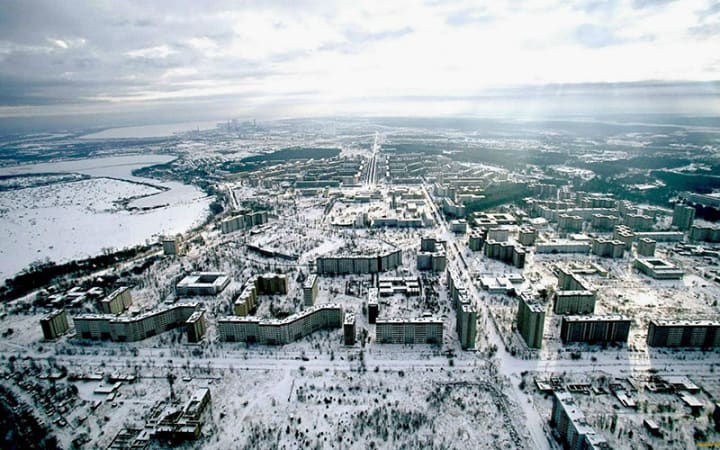
At the scene of the Chernobyl disaster in 1986, the radiation blasts were so high that a fatal dose could be delivered in under a minute. The radiation formed an invisible cloud which spread across the whole of Europe as the largest radioactive release in history. The town’s 50,000 residents were evacuated almost immediately and the unmade beds, unfinished meals and abandoned vehicles haven’t moved in an inch in 30 years.
Walls, toys, and clothes have been burnt through by the radiation and a barely-used theme park stands in abandoned ruin; the kind of scene we’re used to seeing from apocalypse movies just before the zombies flood in. Despite being one of the most obviously radioactive and lethal environments in the world, nearly 7,000 people are still working at the power plant today. Unless you’re a daring journalist willing to take a risk for a good story, you don’t want to find yourself anywhere near Pripyat for a very long time.
About the Creator
Jake Burgess
Always looking forward.


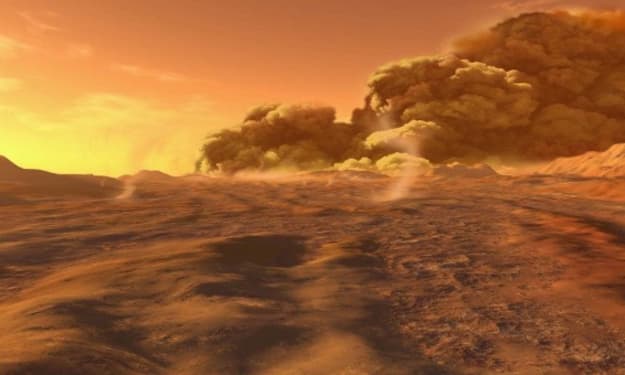



Comments
There are no comments for this story
Be the first to respond and start the conversation.